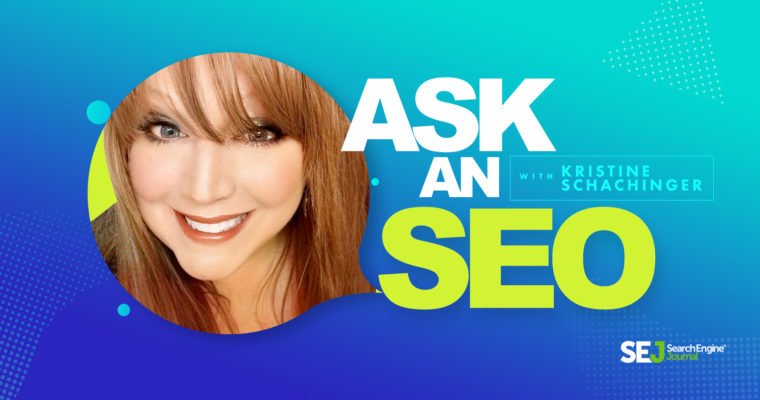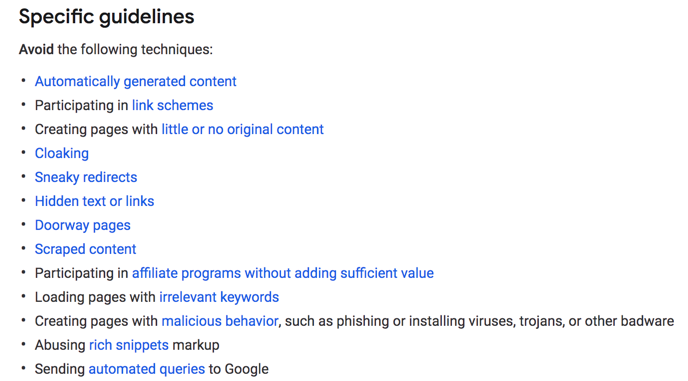

This week for “Ask An SEO”, we have a question from Quora:
“What is a Google Penalty in SEO?”
The term “penalty” is often used very loosely in SEO circles.
When a site experiences a downturn in traffic and visibility the SEO will often say that downturn was the result of a “penalty” whether that downturn was manually applied or algorithmically.
This use of the term, however, is not accurate.
The term “penalty” with regards to SEO, has a distinct and definitive meaning.
What Is a Penalty?
The only true penalty (officially) is a “manual action” from Google.
A manual action is when a Google human reviewer has looked at your website and dampened your visibility in the search engine result pages (SERPs) for violating the Webmaster Quality Guidelines in some manner.

You can be penalized for reasons that aren’t listed here, but most manual actions come from this list.
A penalty is not when your site has a downturn because Google has rolled out a general algorithmic update affecting many sites either positively or negatively.
There is no official name for this process. But when your site loses rankings it is often called an “algorithmic devaluation.”
It’s not a term that exactly rolls off the tongue, so likely why the term “penalty” is so often bandied about. However, penalties are site-specific.
So How Does a Penalty (Manual Action) Differ from an Algorithmic Devaluation?
If you have been in SEO for more than a month or so, you are sure to have heard of the dreaded manual action.
Manual actions are as named – manual actions applied to your site by Google, or more specifically a human at Google, rather than an algorithm.
This happens when Google notices you have violated their Webmaster Guidelines and they give you a “slap on the wrist” (or sometimes a full slap down), for what you have done “wrong” – in other words, a penalty.
The impact of these manually applied penalties on sites differ from site to site depending on the severity of the issue and the Webmaster Guideline that has been violated, but they can range from small downturn in the rankings on a few query terms to full site removal from the search results.
How Will You Know If You Have a Manual Action?
Because Google has applied the penalty directly to your site, they will inform you when it happens via Google Search Console.
This is one of the reasons why it is so important to have search console set up for your site. (I suggest using the URL Prefix not Domain Properties.)
“Google issues a manual action against a site when a human reviewer at Google has determined that pages on the site are not compliant with Google’s webmaster quality guidelines. Most manual actions address attempts to manipulate our search index. Most issues reported here will result in pages or sites being ranked lower or omitted from search results without any visual indication to the user.
If your site is affected by a manual action, we will notify you in the Manual Actions report and in the Search Console message center.” – Google Search Console Help
The main difference between manual actions and algorithmic issues is that manual actions are all known and can be reviewed on Google’s support page for understanding and fixes.
With algorithmic changes, Google’s response is often – well there is nothing to fix. (Almost never true, by the way, but that is for another article.)
Here are the manual actions that can be applied by Google:
- User-generated spam
- Spammy free host
- Structured data issue
- Unnatural links to your site
- Unnatural links from your site
- Thin content with little or no added value
- Cloaking and/or sneaky redirects
- Pure spam
- Cloaked images
- Hidden text and/or keyword stuffing
- AMP content mismatch
- Sneaky mobile redirects
When you go to the site to review these items, Google has drop downs for each one that will tell you how to fix them.
These fixes, however, can be complicated.
Once you have identified your penalty and fixed it you can submit the site for a reconsideration request. This is how you ask Google to remove the manually applied action or penalty.
The ability to submit a reconsideration request also helps distinguish a manual action as a penalty.
While a manual action can be removed with a proper reconsideration request, an algorithmic devaluation cannot. For algorithm issues, you have to wait for the algorithm update to run again.
This was one of the core contentions with old Penguin (before it became “real time”). There was as long as two years between updates and in between sites could not regain their rankings.
With manual actions, all you have to do is fix and request removal.
If Google believes you have done what you should to fix the site and that you won’t violate the guidelines again, they will remove the penalty.
Why Are Algorithmic Devaluations Not Penalties?
This is pretty simple.
Algorithms can devalue sites and limit their visibility and traffic for not meeting the best practices of the Webmaster Guidelines and the Google ranking factor(s) the algorithm is supposed to target – but it can also up value the site and give it much broader visibility and traffic.
Because algorithms can make your site go up or down in terms of visibility and/or traffic, a devaluation cannot be classified as a penalty because, had your site been affected in the reverse, the term could not apply.
One final note: SEO professionals will probably never stop using the colloquial version of the term “penalty.”
It is much easier to tell a client they had a loss in visibility and traffic because of a penalty than it is to try to explain “algorithmic devaluations,” even if that is what they are actually.
[“source=searchenginejournal”]
